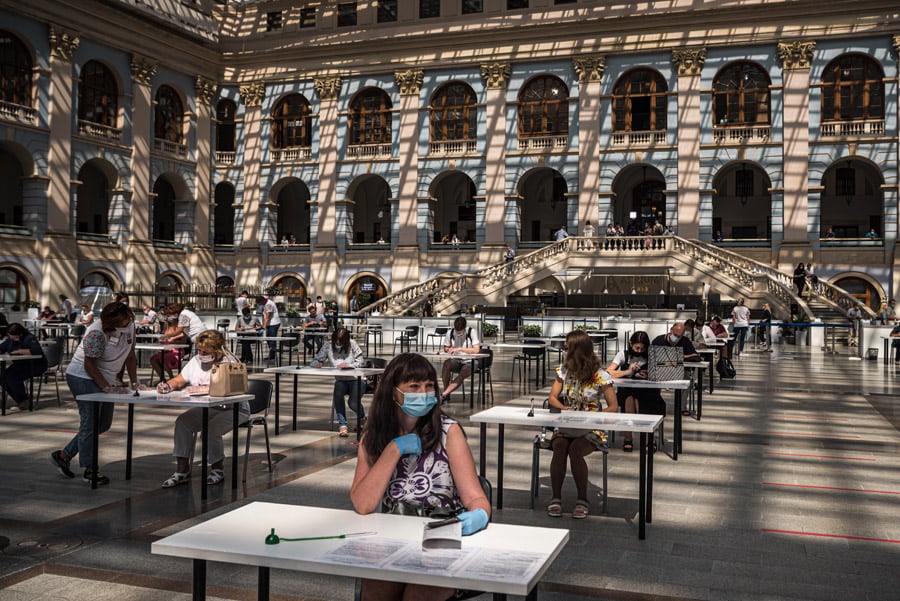
Most of the world's vaccines likely won't prevent infection from Omicron
Only the Pfizer and Moderna shots, when reinforced by a booster, appear to have initial success at stopping infections, and these vaccines are unavailable in most of the world
 A COVID-19 vaccine clinic in Moscow, July 6, 2021. A growing body of preliminary research suggests the Covid vaccines used in most of the world offer almost no defense against becoming infected by the highly contagious Omicron variant. (Sergey Ponomarev/The New York Times)
A COVID-19 vaccine clinic in Moscow, July 6, 2021. A growing body of preliminary research suggests the Covid vaccines used in most of the world offer almost no defense against becoming infected by the highly contagious Omicron variant. (Sergey Ponomarev/The New York Times)
A growing body of preliminary research suggests the COVID vaccines used in most of the world offer almost no defense against becoming infected by the highly contagious omicron variant.
All vaccines still seem to provide a significant degree of protection against serious illness from omicron, which is the most crucial goal. But only the Pfizer and Moderna shots, when reinforced by a booster, appear to have initial success at stopping infections, and these vaccines are unavailable in most of the world.
The other shots — including those from AstraZeneca, Johnson & Johnson and vaccines manufactured in China and Russia — do little to nothing to stop the spread of omicron, early research shows. And because most countries have built their inoculation programs around these vaccines, the gap could have a profound impact on the course of the pandemic.
A global surge of infections in a world where billions of people remain unvaccinated not only threatens the health of vulnerable individuals but also increases the opportunity for the emergence of yet more variants. The disparity in the ability of countries to weather the pandemic will almost certainly deepen. And the news about limited vaccine efficacy against omicron infection could depress demand for vaccination throughout the developing world, where many people are already hesitant or preoccupied with other health problems.
Most evidence so far is based on laboratory experiments, which do not capture the full range of the body’s immune response, and not from tracking the effect on real-world populations. The results are striking, however.
©2019 New York Times News Service







